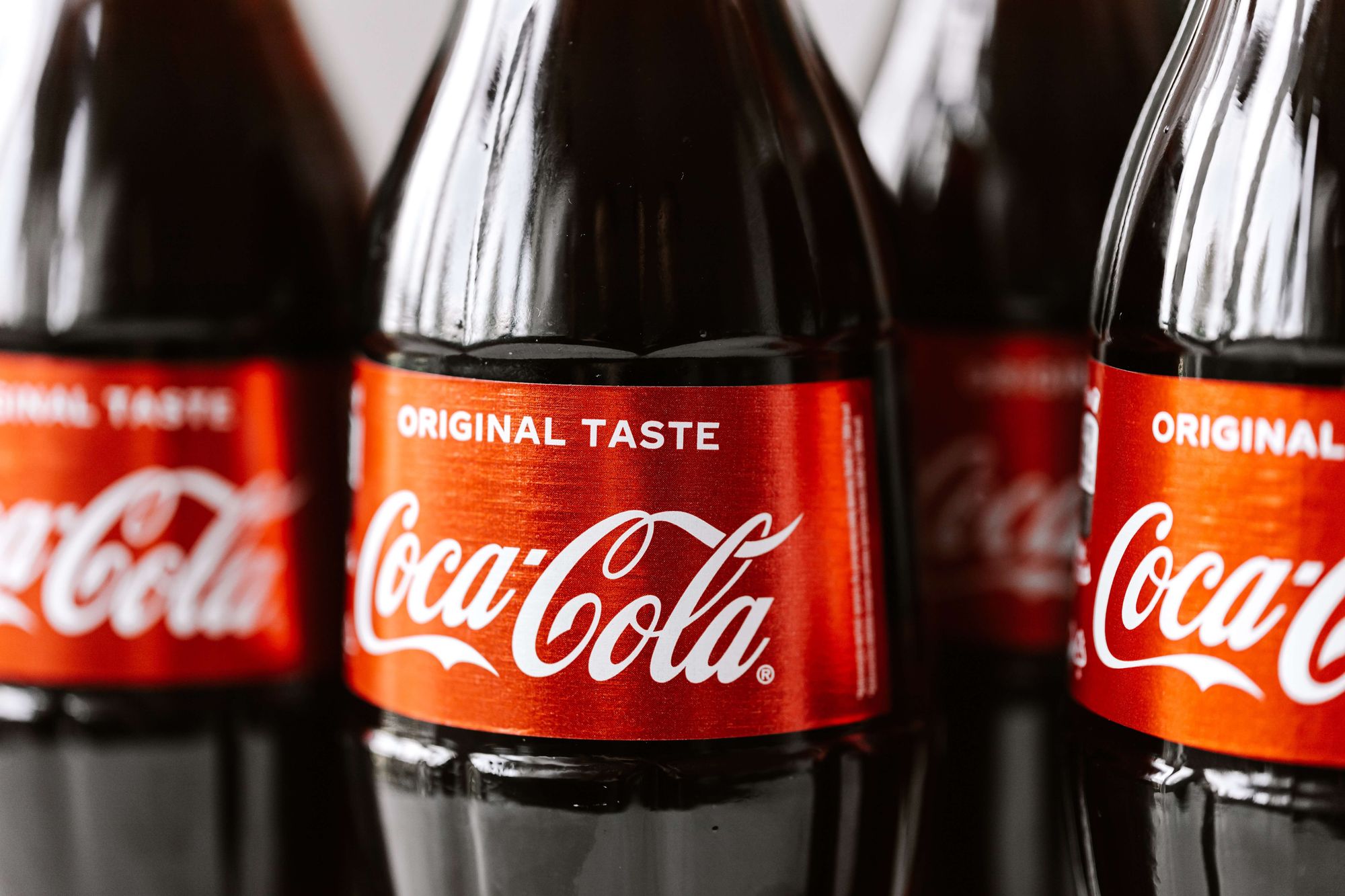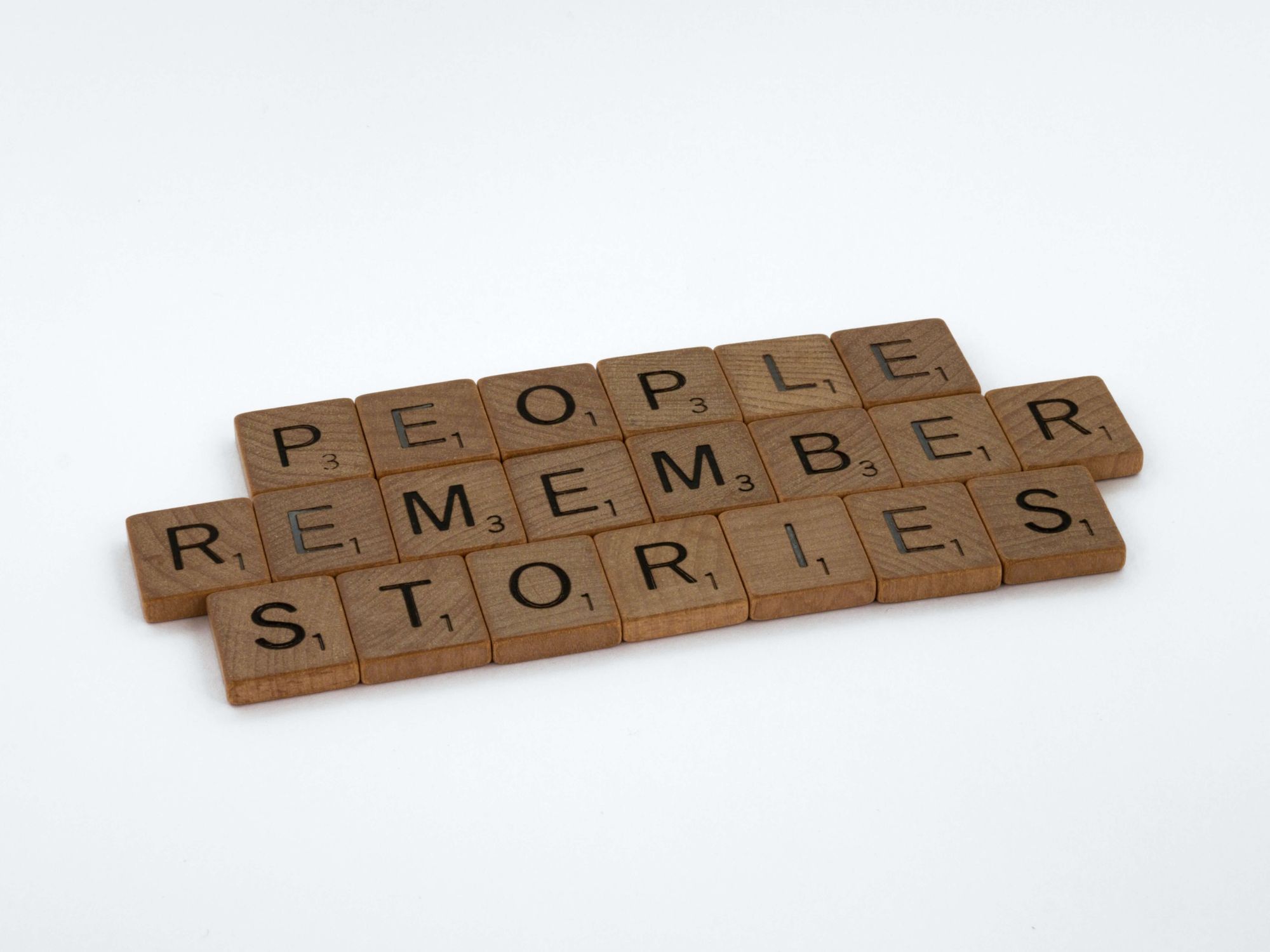It's a tale almost as old as marketing itself: B2C marketing is fun, cool, and witty, meanwhile, B2B marketing is serious, straightforward, and, (not to pull any punches), boring.
But the way businesses operate, and the way people work within them has changed massively, and the way we market to those people is changing too.
I’m Drew Neisser, founder and CEO of Renegade, and also the founder of CMO Huddles. I refuse to accept that B2B marketing needs to be boring. I believe that any B2B brand can embrace emotional connection, humor, and wit in their marketing efforts.
So, join me as I outline how B2B brands can rethink their brand strategy and embrace their individual quirks and personalities to build a lasting connection with their customers.
Prefer to listen? Check out Drew's appearance on the CMO Convo podcast 👇
The philosophy of renegade marketing
At the heart of my approach to marketing is the philosophy of Renegade Marketing, a concept I have detailed extensively in my book - Renegade Marketing. Over the last few years, I've observed an increasing complexity within the marketing sphere, particularly in B2B. This complexity has necessitated a shift in strategy. However, as we've discovered, the solution isn't more complexity - it's simplicity.
In 2019, my team and I embarked on a research project to understand this evolving complexity. We interviewed around 115 CMOs and found that 90% believed marketing had grown significantly more complex in just 12 to 24 months. This sentiment held steady a year later when we repeated the survey, even as the world grappled with the COVID-19 pandemic. However, the pandemic did slightly shift the reasons behind the perceived complexity.
Before COVID-19, the complexity of marketing could be attributed to the deluge of available data, the challenge of multiple target audiences, and an increase in decision-makers. But with the pandemic eliminating physical events - a source of about 50% of lead flow for B2B marketers - new layers of complexity were added to the equation.
Despite the growing intricacy of the field, the response from marketers was unfortunately misguided. The instinctive reaction was to build more elaborate marketing machines, crafting extensive grids of messaging tailored to multiple personas. The problem was, the messages failed to stick, leading to ineffective strategies.
This was substantiated by research from Brent Adamson of Gartner, who pointed out that having different messages for different targets makes a business 2.2 times less likely to make a sale. In essence, increased marketing complexity was leading to decreased effectiveness.
To combat this issue, I proposed a simpler approach in the form of a 12-step plan for building unbeatable brands. This isn't to suggest that the challenges facing modern marketers aren't complex - they are. However, I firmly believe there's a simpler solution to navigate these challenges. This streamlined approach, which we explore in detail in the book, aims to help marketers cope with the evolving landscape without getting lost in the maze of complexity.

The overcomplexity of MarTech
You might naturally assume that access to a wealth of data and various MarTech solutions should make life easier for marketers. Surprisingly though, these elements are only adding to the complexity, particularly for B2B marketers.
The issue lies in the ever-expanding MarTech stack. I recently came across a report suggesting that the average B2B marketer allocates 19% of their budget to MarTech. This figure is nearly double what I recommend in my book, where I advise keeping MarTech spending under 10%.
Why? Because MarTech is not marketing - it's software and technology.
Every addition to your tech suite necessitates the inclusion of two to three people to manage and interpret the new tools effectively. However, this often gets overlooked, and companies end up adding technology without the necessary human support. Consequently, massive, understaffed tech stacks drain budgets and increase data volume, leading to a marketing department struggling to keep up.
Of course, there are exceptions where certain technologies do bring more efficiencies, but these are far from the norm. The typical reality is that marketing automation technology demands significant human input to produce, interpret, and analyze content.
Simplifying the MarTech stack
I am not against marketing technology. In fact, I believe it has amazing potential. However, I am confident that if every CMO conducted an audit, they could reduce their stack by 10 to 20% without negative impact. This reduction could substantially benefit the bottom line and alleviate stress on employees.
The reality is that marketing automation professionals are highly in demand, and those overworked in their current roles are likely to leave for higher-paying opportunities. Therefore, by streamlining MarTech, companies can not only get some budget back to allocate to areas like media or content (which constitute actual marketing) but also retain their valuable employees.
While MarTech is an excellent facilitator and measurer of marketing, it isn't marketing itself. By understanding this and making strategic decisions about MarTech investment, marketers can simplify their approach, enhance their effectiveness, and keep their teams happier.
Humanizing B2B marketing: The branding challenge
The commonly held perception is that B2B marketing lacks the excitement of B2C marketing.
Yet, recent shifts in thinking challenge this assumption. The idea isn't that we're marketing to businesses, but rather, to people who work within these businesses. Some would term this as human-to-human (H2H) marketing.
The concept of 'brand' can be a slippery slope for a startup CMO. It's often considered a vague term synonymous with logos and colors, rather than a driver of business growth. For instance, if a CMO requests a $10 million budget to drive revenue, it's likely to be approved. However, should they mention that a portion of this budget will be allocated to 'brand,' the amount may be reduced, reflecting the lack of understanding around the value of branding.
While I don't delve into this issue in my book, I do emphasize the importance of building a strong brand. How this is communicated when negotiating with stakeholders is crucial and reflects the art of persuasion integral to successful marketing.

Rethinking the target audience
A critical issue in current marketing practices is the definition of the target audience. Many CMOs operate under the mindset of 'Prospect. Customer. Employee.' I argue, however, that this should be reversed to 'Employee. Customer. Prospect.'
If your employees don't believe in your brand, it will inevitably lead to higher turnover, diminished advocacy, and a lack of trust from customers. It’s, therefore, paramount to ensure your brand resonates with your employees.
This is where the concept of a purpose-driven story statement comes into play. It should be a simple, easily remembered phrase of eight words or fewer. This statement allows employees to effectively describe their company and express why they're proud to be a part of it.
Working for a company one can take pride in is vital. In fact, one CMO I know measures marketing success based on employee pride. The company assesses whether employees are proud to work there, using a scale from one to ten or a 'strongly agree, strongly disagree' scale. If the pride number is high, it’s seen as a good indication of successful marketing.
So, to humanize B2B marketing, we must start by marketing to an internal audience. By focusing first on employees and then working outward to customers and prospects, we can create brands that not only resonate but drive genuine advocacy from within.
Employee engagement: The key to dynamic B2B marketing
Building on the pride-based measurement strategy, it’s clear that proud employees not only work harder but also think more creatively about their roles within the company.
They're likely to step beyond merely crunching numbers and performing day-to-day tasks, instead contributing to more exciting, innovative marketing strategies. Here’s where the importance of humanizing a B2B brand comes into sharp focus.
Case Paper: The successful joker archetype in B2B
Consider Case Paper, a company within the seemingly mundane paper industry that we've had the pleasure of working with. The firm cuts and trims paper for printers, a fairly straightforward operation. Yet, they have infused an exceptional personality into their brand, embodying the 'joker' archetype, which is quite a rarity in the B2B realm.
Their purpose-driven story statement, 'on the case,' is a playful pun that defines their brand character. It represents reliability, resourcefulness, and responsiveness. Every employee is familiar with this ethos, and each month they are recognized under these three categories for embodying the brand's spirit of being 'on the case.'
This recognition is not limited to the internal team but extends to their printers, who also have other customers. They have created awards for the printers, allowing the brand's influence to cascade downwards. This playful recognition scheme is imbued with humor, encouraging the team to not take themselves too seriously while enjoying the notion of being 'on the case.'
This isn't about just delivering on time; it's about being proactive, suggesting cost-saving alternatives to customers, and providing top-tier service. Through their distinctive brand character and focus on employee engagement, Case Paper has enjoyed significant success both in terms of recruitment and retention and customer growth, even in challenging times.

Reinvigorating the B2B brand: Courageous, artful, thoughtful, and scientific traits
When considering how to inject more excitement into a 'boring' B2B brand, it's useful to look at the framework I discuss in my book. This framework, symbolized by the acronym 'CATS,' represents Courageous, Artful, Thoughtful, and Scientific traits. We start with Courageous, a crucial characteristic for any CMO.
If a CMO lacks courage, they're unlikely to succeed in their role. As a CMO, your time to make an impact within an organization is notably short, given the famously high turnover rates. Making a difference requires introducing changes, which in turn demands courage. Failing to enact change means you won't leave a significant impact, leading to a premature exit.
This is perhaps a simplified perspective, but typically, a CMO has six months to deliver a quick impact and 18 months for a more substantial impact. The first goal is about securing a 'quick win,' something that can be achieved by modifying existing marketing plans and establishing credibility with the C-suite.
Once this credibility is gained, you can demonstrate the significant role marketing can play in the company's success. This all starts with having the courage to build a distinct brand.
Clearing the clutter: The first step to impactful change
A common challenge faced by new CMOs is the multitude of tasks and expectations thrown at them upon taking up their position. From the CEO's high expectations and the CFO's budget restrictions to the Sales Head's lead demands and the HR's internal communication requests, it's a sea of priorities that can feel overwhelming.
However, a successful CMO possesses the ability to clear away this clutter. They have a knack for identifying top priorities that align with the organization's strategic plan and sticking to them for the next few quarters. If something isn't on their priority list, they have the courage to say no.
This issue has been further exacerbated during the COVID-19 pandemic, where the lines between work and home have blurred. Instead of using extra hours for self-improvement or exercise, many find themselves working from early morning till late at night. However, clearing away the clutter is essential for maintaining focus and making an impact.
You need a clear strategic plan agreed upon by the C-suite and a consensus on the metrics that matter. You have to drive revenue, no doubt, but the 'how' is equally important. By initiating demand programs and focusing on a bigger brand idea than the current one, you can foster significant growth.
But to accomplish this, you must clear away the clutter, ensuring that you remain focused and effective in your role.
Balancing stakeholder dependencies and artful communication
Being a CMO is an intricate balancing act. One is often dependent on several factors, including product quality and the buy-in from financial decision-makers such as the CFO. In this context, the CFO's willingness to assign a substantial budget to marketing, instead of expecting magic from unpaid channels like social media, is a significant enabler for the CMO's success.
That's why I emphasize the need for artfulness in a CMO's approach. As a CMO, you must excel in communication, not just externally with customers but also internally within the organization. Thus, it's essential to establish a solid agreement with the C-suite on what the company aims to achieve.
The primary challenge that many companies face is a skewed communication approach. Most often, companies start with the question, "What is the message that I want to convey?" instead of asking, "How can I assist someone today? What value can I provide?"
This inward-looking focus is where 90% of the problem lies. Technical teams may be eager to showcase their product's features, and CEOs might exert pressure to drive numbers up, but these efforts may not translate into sales. People don't buy products solely because they boast impressive features. They purchase solutions that they believe will enhance their work or personal lives in some way.
This customer-centric perspective is what I refer to as 'selling a service.' It entails focusing on how you can help your customers - and this may not even necessarily involve your product or service. By adopting this outward focus, you align your marketing efforts with customer needs and desires and thereby enhance your chances of success.
Leveraging empathy and essentialism in B2B marketing
In the realm of B2B marketing, it's always been about how you help the people on the far end of your marketing. The value you bring to the customer, not merely the features of your product, has always been paramount.
When the COVID-19 pandemic hit, I was intrigued by several CMOs who reached out to every single customer, asking about their situation. They wanted to know how the customers were doing, how their cash flow was, and what they could do to help. The realizations were profound in many cases, with customers hurting significantly. These CMOs extended contracts, deferred payments, or highlighted unused aspects of the product that could provide much-needed assistance.
The pivot to empathy became crucial for CMOs, internally and externally. Everyone was grappling with the unsettling reality of the pandemic - employees worrying about health risks and customers unsure about their business future. The guiding principle became less about selling and more about helping. In fact, one CMO aptly said, "The less we sold, the more we sold." This approach was a revelation, but also a challenge in convincing rational, scientific engineers to understand this kind of emotional connection with customers.
Another intriguing aspect that the pandemic highlighted was the concept of essentialism. In the early stages, businesses flourishing were those classified as ‘essential,’ like hospitals and everything cloud-based, including companies like Zoom. But the businesses not considered ‘essential’ had to meet the CFO, the person holding the purse strings, who demanded evidence that spending on certain areas was vital for business operations.
So, the question for customers became how the business was essential, which led to a very different conversation. Companies started introspecting, acknowledging if they were a nice-to-have or a must-have. In order to claim essential status, businesses needed to prove a return on investment, as everyone was trying to figure out how to generate more revenue during an economic slowdown.
Freemium: A response to essentialism
This sparked changes in product design and pricing strategies to offer a faster ROI. There was an exploration of lighter versions of the product, making it easier for customers to get started, and embracing product-led marketing. Freemium models performed exceptionally well, removing initial risk and lowering barriers to entry. If a product wasn't essential, it had to be free.
This strategy worked wonders because it offered an attractive price point for customers.
Furthermore, freemium models also enable a ‘sell-through service’ approach. When you give something away through your marketing, like valuable content, you open up the opportunity to build a relationship. The only risk for the customer is their time, making it a small price to pay to try a free product.
Building an emotional connection
An essential product becomes part of a customer's day-to-day working life, fostering an emotional connection. For instance, Slack, a communication tool that became indispensable during remote working, has an emotional connection with many people. The relationship goes beyond the tool's functionality; it becomes a vital communication avenue for colleagues and partners.
Slack's growth during the pandemic demonstrates the potential of this emotional bond, and it's a prime example of a great B2B brand. The realization that tools like Slack were not just for tech enthusiasts but essential for business operations was transformative. The freemium model of Slack contributed greatly to its booming success.
In essence, the B2B marketing landscape has been shaped significantly by empathy and essentialism. It's about more than just selling a product; it's about fostering a connection and providing real value.
Navigating generational shifts and building distinctive B2B brands
Looking ahead, B2B marketers will need to navigate the shift towards human-centric approaches as Gen Z begins to dominate the workspace. An interesting facet here is the balance between embracing generational change and acknowledging that each generation sees itself as distinct, while ultimately there's a reversion to the mean. As marketers, we should focus more on how to serve our target audience rather than strictly aiming to appeal to a specific age group.
Indeed, for recruitment purposes, being where these individuals are and understanding their mindset is key. For example, it might be necessary for a B2B brand to be on TikTok if that's where their future employees are, even if their customers aren't necessarily there. However, my expertise isn't necessarily focused on Gen Z per se, but rather on how B2B brands are built.
Building a B2B brand starts with a distinctive promise - a commitment to the marketplace. Then, it's all about finding ways to communicate this promise effectively to employees, customers, and prospects. The plan should be simple and clearly laid out; focusing on adding value to the target audience ensures we're on safe ground, irrespective of the channel.
Interestingly, I know some B2B brands that have stopped digital marketing altogether, barring their website, and have shifted to outdoor media and radio. It's surprising, but hard to ignore billboards, especially strategically placed ones. If they are clever enough, they might even spark conversations and get shared on social media. It's vital not to make assumptions about what's going to work and what isn't when it comes to media, but rather experiment and learn.
There are cases where brands couldn't increase their digital presence anymore, so they turned to television, and subsequently, their digital performance improved. It's important to remember that these alternate channels can work, even for a B2B brand. There aren't hard and fast rules when it comes to media, but there are when it comes to 'brand.'
In building our brand, our goal should be for employees, customers, and prospects to feel good about the company and want to do business with us. Not every brand can take a humorous approach, but there's room for it in every category.
I discuss in my book the idea of brand archetypes, and it's crucial to realize that not every brand can or should be the 'hero.' Many B2B brands fall into the 'hero' or 'wise sage' categories, but there's room for a wide range of other archetypes as well, like the 'explorer' or the 'magician.'
Understanding your brand archetype can equip the marketer with the language to simplify and clarify the brand approach. If we define the brand with a set purpose and align it with an archetype, we simplify our approach dramatically. This clarity in identity and purpose can help us focus on how we can best serve our customers.
Corporate culture and culture evolution
When considering the use of archetypes in marketing, the existing corporate culture holds substantial importance. At Case Paper, for instance, the humorous disposition of the CMO has greatly contributed to shaping the brand's voice. The CMO leverages the skills of freelance writers with improvisational backgrounds to maintain this fun and playful vibe.
The present time is quite critical for evaluating and understanding corporate culture. The concept of culture in a remote working environment is still a gray area for many. It is a challenge to foster a sense of connection to the company for those who started during the pandemic, as they haven't had the chance to experience the physical office environment. As a result, it's crucial for marketing and HR to align their efforts, discuss where brand and culture intersect, and strategize on building culture in a virtual world.
Previously, organizations hired employees who fit into the existing culture. However, the trend is shifting toward hiring individuals who can enhance and expand the culture. This change aligns with the concept of neurodiversity, aiming for a diversity of thought within the organization.
Corporate culture, therefore, is an ongoing endeavor. To understand it better, I suggest that a CMO should initiate an employee survey on the first day. This survey, which I have detailed in my book, serves a dual purpose. First, it communicates to the employees that their opinions matter. Second, it provides the CMO with invaluable insights into the employees' perception of the brand.
Shifting the corporate culture
If a company decides to shift its corporate culture - for example, from a serious to a more humorous one - it may require implementing specific programs. Some companies with a culture centered around humor offer training programs on how to be funny, including stand-up and improv classes. Initiating such activities can significantly contribute to fostering the desired culture change.
The journey to redefining corporate culture should ideally start on day one, prioritizing the engagement of employees. Understanding where the employees stand can either guide the path toward the desired culture or signal the need for a change.
Rethinking branding
Recently, I have observed new CMOs feeling compelled to change the brand, often interpreting this as altering the logo or redesigning the website. I would argue that this perception of rebranding as an aesthetic overhaul is somewhat misguided. A brand encompasses more than just visual elements.
CMOs should focus on aspects that directly impact the business, such as revenue growth. It’s crucial to determine how marketing strategies influence revenue, considering it as the primary measure of success. Partnering with the CRO and CFO can help in understanding marketing's contribution to the company's financial health.
While assessing the brand's internal perceptions through an employee survey and evaluating its external perceptions via a customer survey, it's also essential to measure the company's current pipeline. Identifying short-term and long-term objectives can help prioritize and tackle the challenges efficiently.
However, this dual approach can stretch a CMO's responsibilities in numerous directions. Thus, it's crucial to establish a simple framework that can address these issues systematically.
As outlined in the first chapter of my book, I have proposed a ‘Clear away the clutter’ pledge, which comprises five guiding principles. These include:
- Focusing relentlessly on a handful of strategic priorities
- Saying no to distractions
- Delegating everything except for things that only I can do
- Not adding to the to-do list without taking something off
- Reserving 30 minutes a day for strategic thinking
Adhering to these principles can significantly streamline the approach toward redefining corporate culture and branding.
If you’d like to learn more about anything discussed in this article, you can grab a copy of my book Renegade Marketing: 12 steps to building unbeatable B2B brands, available on Amazon and paperback ebooks and audio.




 Follow us on LinkedIn
Follow us on LinkedIn




